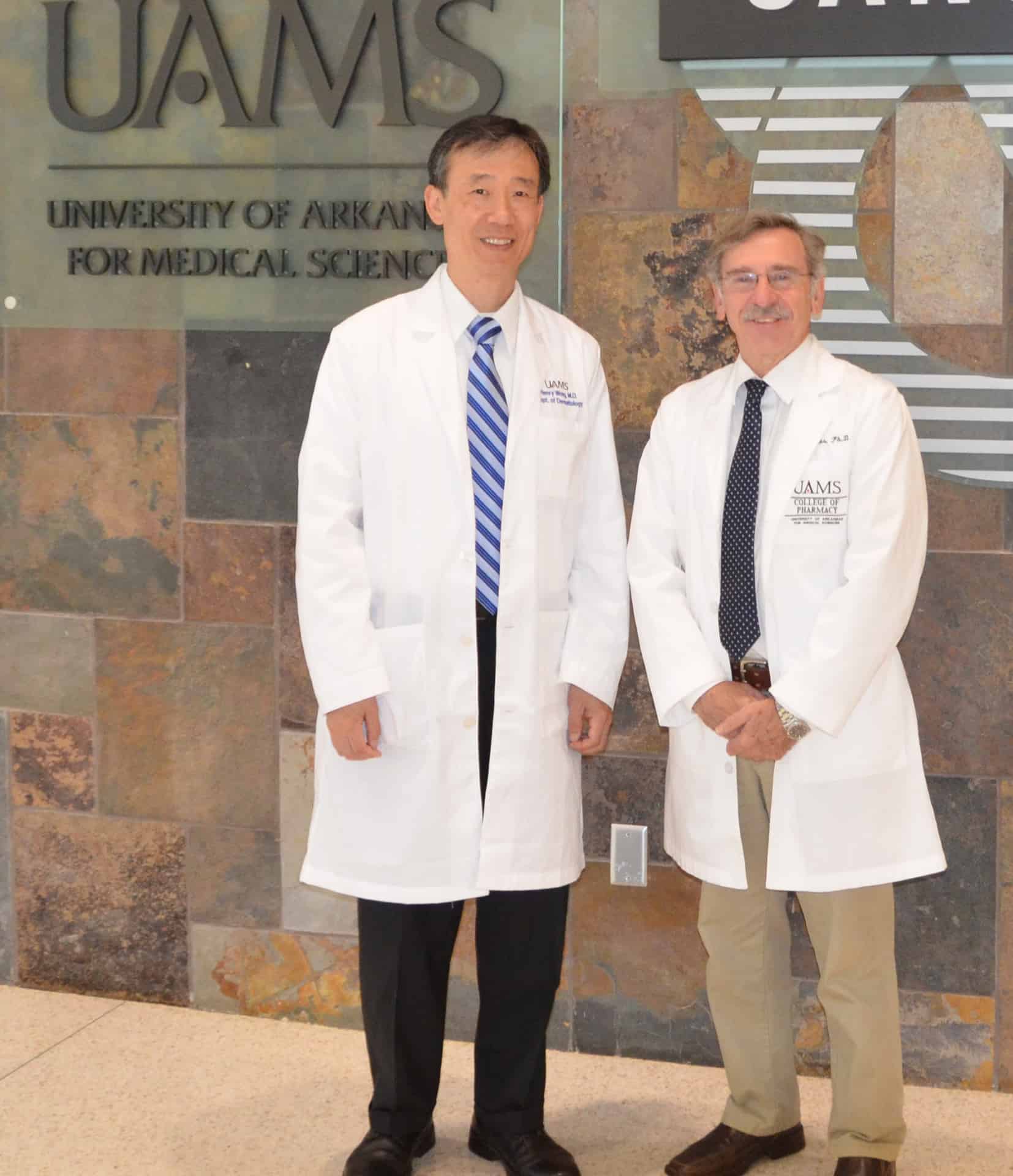Experts in Rare Skin Lymphoma Join Forces at UAMS
| Sept. 2, 2015 | Persistent skin rashes are usually more of an annoyance than a serious medical condition. However, in the case of cutaneous T-cell lymphoma (CTCL), what looks like a simple rash can progress to a life-threatening condition if not caught early.
“Cutaneous T-cell lymphoma is a complicated disease that affects different patients in different ways,” said Henry Wong, M.D., Ph.D., chairman of the UAMS Department of Dermatology. “While this type of lymphoma grows slowly in most patients, it can become extremely aggressive in others.”
CTCL is actually a group of T-cell non-Hodgkin lymphomas that begin on the skin as an itchy, red rash. If left untreated, the nodules can thicken, form tumors and potentially spread to other parts of the body.
Because CTCL is primarily a slow-growing type of lymphoma, many people live with it for years, keeping it under control through the use of skin-directed therapies such as topical treatments and ultraviolet light therapy. However, a subset of patients progress as their disease becomes more aggressive. Those with aggressive forms of the disease may require additional, harsher therapies as it spreads to the lymph nodes or other locations in the body.
“Although CTLC starts on the skin, a big concern for patients is whether they have the disease inside their body, which could require them to have scans or invasive tests. If our exam indicates it’s isolated to their skin, they don’t need these tests and only have to undergo skin biopsies and blood tests,” said Wong, who joined UAMS in April 2015.
The tricky part is diagnosing CTLC so proper treatment can begin early. Because the condition is rare and looks similar to rashes like psoriasis, many dermatologists and oncologists are unfamiliar with it and may require multiple biopsies before a diagnosis is reached.
“We need to be vigilant about rashes that don’t respond to traditional therapies. Treatment of CTLC is complex, and patients benefit from seeing a doctor who has experience treating this condition with a variety of specialty agents,” Wong said.
One of the latest advances in treatment of CTLC is a topical gel called Valchlor, which was developed by a team of scientists led by Peter Crooks, Ph.D., chairman of the Department of Pharmaceutical Sciences in the UAMS College of Pharmacy.
Crooks began developmental work on the drug in 2004, about seven years before he joined UAMS. In 2013, it received FDA approval for treatment of stage 1A and 1B mycosis fungoides-type CTCL.
“The key is getting diagnosed quickly by an experienced dermatologist. When Valchlor is used in the early stages of CTCL, it can clear it up without the harsh side effects of other types of chemotherapy,” Crooks said, adding that once CTCL has metastasized, Valchlor loses its effectiveness.
Crooks developed Valchlor to FDA specifics, including the fact that it must never be detectable in the bloodstream. “When you use it on the skin, it stays on the skin and doesn’t penetrate the vascular bed or get absorbed into the general circulation,” Crooks said.
Valchlor is manufactured by the pharmaceutical company Actelion, which purchased Ceptaris Therapeutics, the company Crooks co-founded and where he developed the drug. Crooks stepped down as chief scientific officer of Ceptaris when he joined UAMS.
Now that Wong and Crooks are working on the same campus, both say they are ready to collaborate and further their knowledge about CTCL.
“I’m delighted Dr. Wong has arrived at UAMS and look forward to working together. I believe we can continue to improve on this drug and extend the use of it,” Crooks said. “It’s also great for the people of Arkansas to have an expert in CTLC who can diagnosis this condition early and save lives.”
In addition to future collaborations with Crooks, Wong in the process of establishing research lab studies to further understand the disease using tissue donated by UAMS patients.
“Not only do patients who come to the Cancer Institute have the benefit of doctors who understand their disease, they also can participate in research and clinical trials that can improve treatment in the future. That’s an important part of the comprehensive experience patients get at a strong cancer center,” Wong said.
